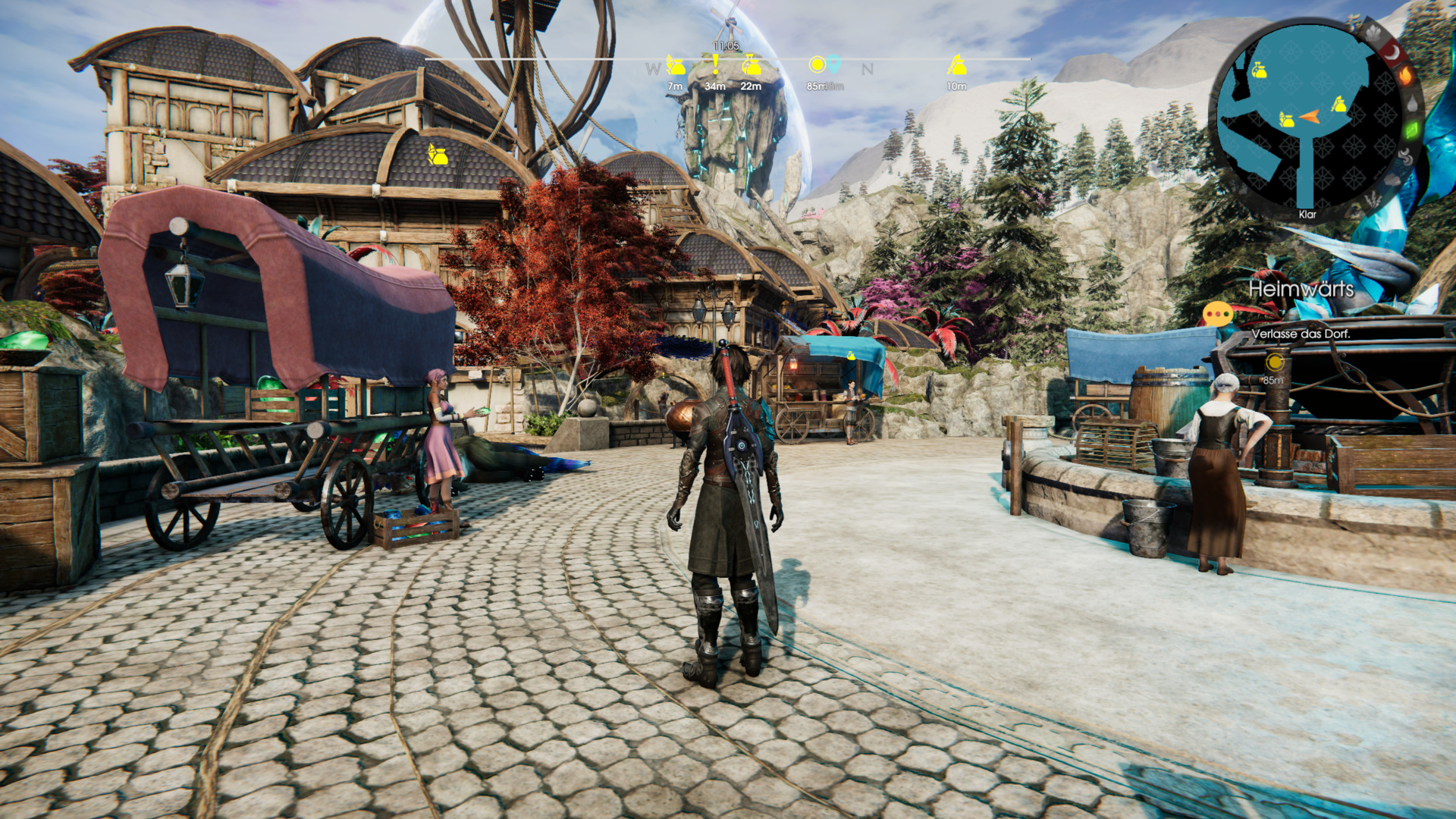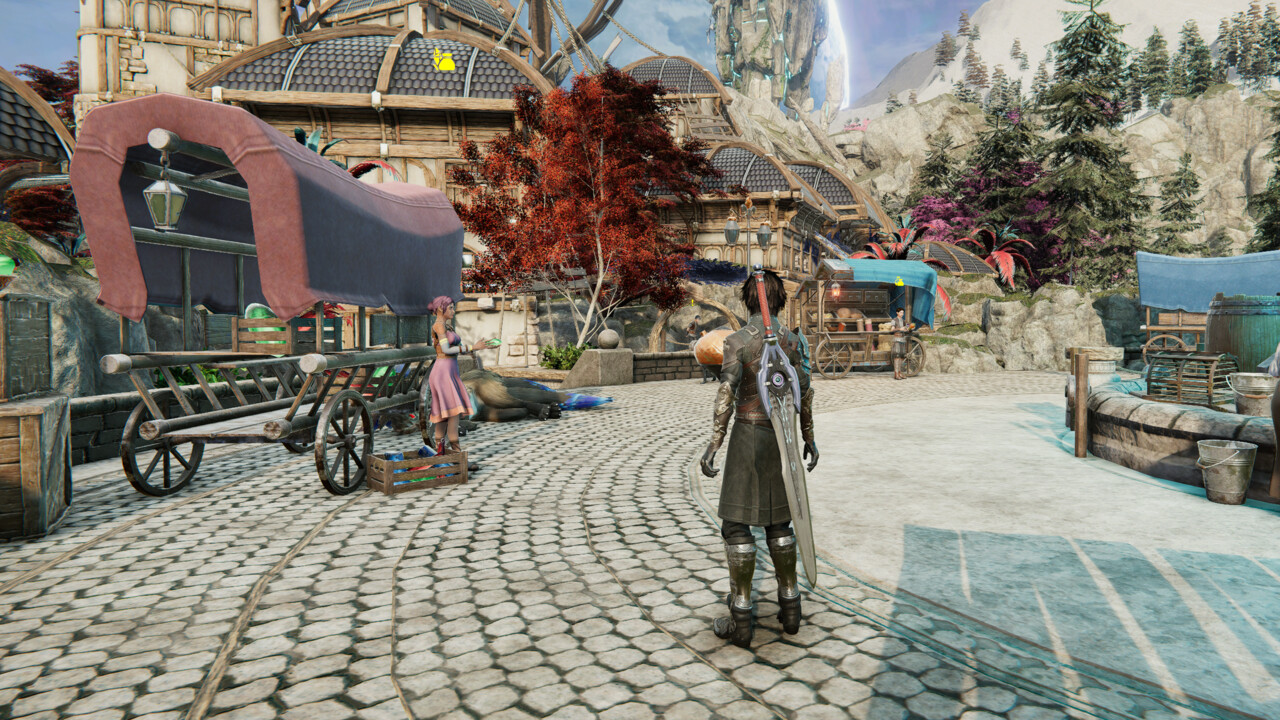AMD FSR vs. Nvidia DLSS in Edge Of Eternity
: Test |CUP | Specs |Config
Edge Of Eternity supports both AMD FidelityFX Super Resolution (FSR) and Nvidia DLSS, most titles can only handle one or the other. The direct comparison in the test shows: FSR and DLSS have very different strengths and weaknesses in the same game, no technology can completely convince.
AMD FSR and Nvidia DLSS combined in one game
After AMD left the competitor Nvidia with its intelligent AI upsampling DLSS (test of DLSS 2.0) unrivaled for a long time, the competitor technology FidelityFX Super Resolution has been vying for game integration since June. A direct comparison of both upscaling variants is difficult, however, because virtually all titles support either AMD or Nvidia’s technology, and it is rare that both are used.
Midgar relies on the Unity engine
Edge Of Eternity (EoE) is one of the few games that has both DLSS and FSR integrated. It should be noted, however, that Edge Of Eternity is developed by the small French studio Midgar and does not use its own engine, but rather the Unity engine, in which neither DLSS nor FSR were perfectly configured for the title, as the test will show.
The strengths and weaknesses of Nvidia DLSS in EOE
Nvidia’s DLSS 2.0 or, more precisely, DLSS 2.2.11.0 can be activated in Edge Of Eternity in the usual “Quality”, “Balance”, “Performance” and “Ultra Performance” levels. Since DLSS is a temporal process, the game’s anti-aliasing is deactivated the moment a DLSS mode is switched on.
DLSS can score points in many games with excellent image stability and this is also the case in Edge Of Eternity. The game’s own HQ-TAA does a mediocre job in this regard, because numerous picture elements still flicker slightly even in high resolutions. In Ultra HD this is only a minor problem, but it still remains visible.
The image stability is always very good with DLSS
With DLSS, even the quality setting in 2,560 × 1,440 produces an even more stable image than HQ-TAA in 3,840 × 2,160 – that’s impressive! Only DLSS on “Performance” becomes restless in WQHD. In Ultra HD, even the performance mode only flickers minimally and is still superior to the HQ-TAA. DLSS on “Quality” then manages to create an almost flicker-free image in Ultra HD.
However, as good as the image stability is, there is also a small disadvantage with it: vegetation, especially the leaves on trees, loses structure with DLSS in motion. The treetop becomes a single mass instead of many small details. But this is a disadvantage that outweighs the advantage.
DLSS is usually just as powerful at image reconstruction. However, Nvidia’s AI upsampling in Edge Of Eternity cannot extend this strength, because the game’s own TAA also works very well in this regard and there is simply nothing to reconstruct even in lower resolutions such as WQHD. However, classic DLSS weaknesses such as smearing and ghosting in EOE are virtually irrelevant – both problems exist in the game, but you have to provoke them with special camera movements and even then they are hardly noticeable. With one exception, no image errors were noticeable during testing.
Image sharpness is not a strength of DLSS in EoE
On the other hand, DLSS has its difficulties with image sharpness. Edge Of Eternity is not particularly sharp even with the native resolution including HQ-TAA and with DLSS everything becomes a little more blurred. In addition, there is a strange behavior that has never been seen in this form and that actually makes no sense: A lot of image content looks sharper with DLSS on “Performance” regardless of the resolution than with DLSS on “Quality”. This does not apply to every element, because in some cases DLSS on “Quality” generates sharper pixels than DLSS on “Performance”. Nevertheless, the overall picture with DLSS on “Performance” is always clearly sharper in the end, even if the mode is inferior to the native resolution.
Ultra HD – native resolution + HQ-TAA
image 1 from 25
Why this is so is not entirely clear. It is quite conceivable that the game with DLSS on “Performance” simply sharpens it a little more than with DLSS on “Quality”. There is actually no other logical reason. Even if DLSS does not come close to the image sharpness of the native resolution regardless of the setting, the good news is that the blurring effect does not increase further in lower resolutions.
There are also problems with the Mip-Maps
Image blurring is an ugly effect, but not the biggest problem with DLSS in Edge Of Eternity. Apparently the mip-map behavior of the game is not based on the target resolution of DLSS, but on the actual rendering resolution – with the result that with DLSS completely different levels of detail are used for some surfaces than with the purely native resolution. As a result, some objects with DLSS either become significantly more blurred than they already are, or even display far fewer details. That is not always noticeable. If the effect occurs, it does so correctly. In some cases it almost seems as if the game doesn’t use anisotropic texture filtering at all if DLSS is activated.
The strengths and weaknesses of AMD FSR in EOE
AMD’s FidelityFX Super Resolution couldn’t be much more contrary to DLSS in Edge Of Eternity. The only real parallel, even if not in the name, are the quality levels “Ultra Quality”, “Quality”, “Balanced” and “Performance”. Apart from that, the results of FSR and DLSS in the game have nothing in common, which is also due to the fact that unlike the competing technology, FSR currently has no temporal component. The game’s own HQ-TAA will continue to be used accordingly.
With FSR, EoE is finally getting (a little too) sharp
The developers have AMD’s CAS sharpened properly when using FSR, with the result that Edge Of Eternity is significantly sharper than with the native resolution and sometimes shows details that can either only be guessed at without FSR or cannot be recognized at all. where these stop available (FSR cannot reconstruct any image details), but cannot be seen in the blurring.
Not only is “Ultra Quality” much sharper in Ultra HD, FSR on “Balanced” is also superior in this regard. And the same goes for WQHD. In addition, there is no “DLSS problem” with the Mip-Maps at FSR. But as pleasant as the added image sharpness with FSR is, the developers have exaggerated it a little. Sometimes the picture looks too sharp, a middle ground would probably be the perfect compromise.
Image stability is a problem
Clearly the biggest weakness of FidelityFX Super Resolution in Edge Of Eternity is the great strength of DLSS: the image stability. This is not flawless with the native resolution including HQ-TAA even in Ultra HD. With FSR and the resulting reduced resolution, it continues to decrease. The massive re-sharpening then intensifies the effect again, with the result that FSR tends to flicker visibly even in ultra-quality mode in 3840 × 2160, the effect is particularly easy to see with vegetation. With the balanced setting, the game clearly flickers even in Ultra HD, the same applies to FSR on “Ultra Quality” in WQHD. With the balanced setting, EoE looks pretty gruesome in WQHD. In even lower resolutions such as WQHD, ComputerBase can no longer recommend upscaling. Even DLSS is no longer able to generate an optically acceptable image.

WQHD – native resolution + HQ-TAA
image 1 from 25
On the next page: FSR or DLSS, benchmarks and conclusion
















